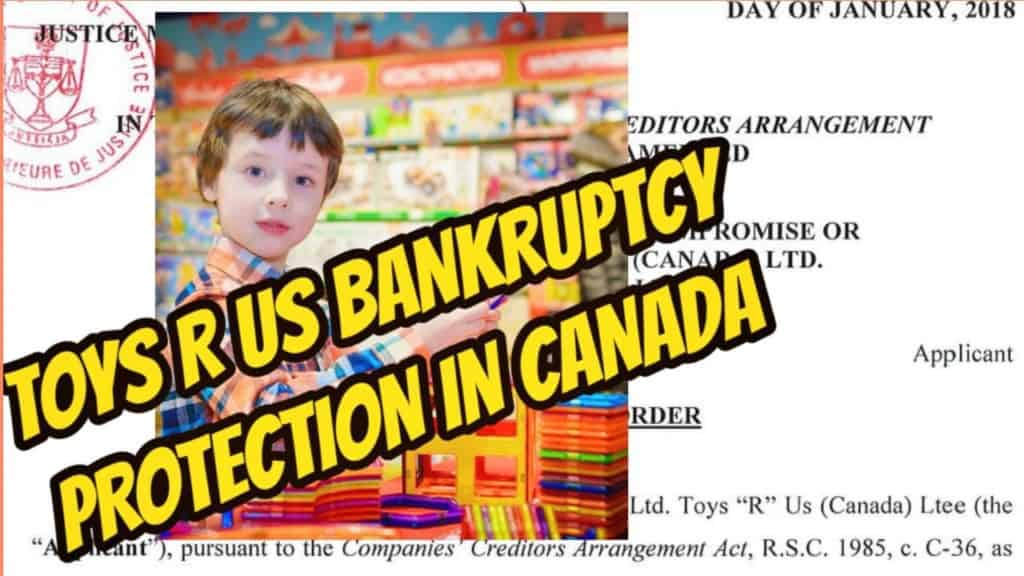
The Ira Smith Trustee Team is absolutely operational and Ira, in addition to Brandon Smith, is readily available for a telephone consultation or video meeting.
If you would rather listen to the audio version of this company bankruptcies Brandon’s Blog, please scroll to the bottom and click on the podcast.
Company bankruptcies introduction
Company bankruptcies have been in the news during 2020. The ones that got the most attention were large US retailers filing for Chapter 11 bankruptcy protection, their Canadian subsidiaries filing for restructuring or pure Canadian retailers who needed to file.
In the United States, almost one-third of 40 big firms seeking U.S. bankruptcy protection during the coronavirus pandemic awarded bonuses to execs within a month prior to filing their cases, according to a Reuters evaluation. Eight companies, consisting of J.C. Penney and Hertz, approved the bonuses as few as five days before seeking bankruptcy protection.
In this Brandon’s Blog, I discuss why this happened and look at could it happen in Canadian bankruptcies cases.
The role of a Key Employee Retention Plan (KERP) in company bankruptcies
A KERP is not a new concept in company bankruptcies. KERP refers to an advantage strategy utilized by a debtor company in a bankruptcy situation as incentives to upper management to stay working for the business throughout the bankruptcy. The purpose of this KERP is to help in the retention of particular essential qualified and competent executives of the company and its subsidiaries, by providing a retention bonus offer for such employees in return for their continued employment during the restructuring of the business in bankruptcy protection.
The KERP intends to maintain qualified officers, employees, and directors of the company and its subsidiaries upon whose judgment and effort the company depends upon for the successful conduct of its business. It is expected that providing such persons with a direct stake in the firm’s successful restructuring will assure a more direct alignment of their interests with those of the business and have them working on the company’s behalf throughout the entire financial restructuring. In this way, senior management and key personnel are incentivized to keep their employment with the company throughout its restructuring and not leave for a new opportunity.
So if KERP is normal, why pay out big bonuses ahead of time?
This phenomenon is unique to company bankruptcies restructurings in the United States. So far, it has not been applied directly to Canadian insolvency filings. The main reasons are the legislation and because of the supervisory role and practices of the courts.
KERPs have long caused objections that companies are enriching execs while cutting jobs, stiffing creditors and wiping out shareholders. In March, creditors filed a claim against previous Toys R’ US executives and directors, accusing them of misdeeds that consisted of paying out such rewards days before its 2017 bankruptcy filing. The company liquidated in 2018, terminating 31,000+ workers.
An attorney for the execs and directors stated the benefits were warranted, given the added work and stress on senior executives, as Toys R’ US had wanted to remain in business after its restructuring. As we all know, the restructuring failed and the company was liquidated.
United States legislation in 2005 needed execs and other company insiders to have a competing job offer in hand before getting retention bonus offers through a bankruptcy protection administration. That forced companies to design new means to pay the bonuses.
After the 2008 financial crisis, firms frequently proposed bonuses in bankruptcy court, casting them as incentive plans with goals execs have to satisfy. Courts mostly accepted the plans, ruling that the performance benchmarks placed the payment past the purview of the limitations on retention incentives. The plans, nonetheless, sparked objections from creditors calling them KERPs in disguise.
At some point, companies discovered they could avoid analysis entirely by approving benefits before insolvency filings. US Bankruptcy Trustees have no power to stop bonuses paid even days prior to company bankruptcies.
Why big bonuses are not paid out on the eve of company bankruptcies in Canada
As I mentioned earlier, the treatment of KERPs is really directed by the supervision of the court. A large Canadian bankruptcy protection filing that might involve a KERP is done under the Companies’ Creditors Arrangement Act (Canada) (CCAA). The Canadian legislation and therefore the decisions of the courts in Canada are different than in the United States.
A financial restructuring under the CCAA is a collaborative effort in Canada. It is not as adversarial as in the USA. In a Canadian CCAA restructuring, a Monitor is appointed by the court. The Monitor to a large extent is the “eyes and ears” of the court. The process is that the Monitor acts as a supervisor over the company’s affairs in restructuring and also acts as a mediator between the various stakeholders. The court places a high degree of reliance on the Monitor’s recommendations. The court also expects its Monitor to be in the middle of all important matters and make thoughtful and pragmatic recommendations.
In Canada, the legislation does not directly address the issue of a KERP. Rather, the court will review the terms of a KERP put before it for approval. The court expects that:
- Hard evidence will be put before it to show why the KERP is required and will aid in the company restructuring.
- Why the employees for whom it is being recommended qualify.
- The court will want to see that the KERP was negotiated, that key stakeholders had input, and there is not a “one size fits all” plan for all the employees.
- Rather, individual employee characteristics have been taken into account.
- The Monitor has been involved in the discussions and is recommending it to the court with reasons.
The proper use of an appropriately-calibrated reward plan is evident:
- Company bankruptcies cause staff members now in an insecure position to be prey to competitors able to provide the possibility of a stable and solvent workplace to people whose natural very first top priority is caring for their households.
- There is a danger that the top and mobile employees will certainly be cherry-picked while the company in a restructuring might discover itself significantly handicapped in attempting to attract competent senior staff.
- Sometimes a restructuring can result in a court-supervised sales process. Employees might commonly find themselves being asked to bring all of their skills and devotion to the task of making themselves unemployed.
- Considering that many employers use a mix of base pay and profit-based motivations, company bankruptcies causing a restructuring may put greater demands on key staff including covering for associates who have been laid off or who have actually left for greener fields.
The main factors considered by the court being asked in company bankruptcies to approve a KERP
The main factors a court considers during company bankruptcies are:
- Whether the Monitor recommends the KERP agreement and the cost.
- For the senior staff to which the KERP is being recommended, how realistic is it that they would seriously consider various other work choices if the KERP was not approved?
- Is the continued employment of the senior staff members for which the KERP is being recommended is essential for the security of the business and to boost the performance of the overall restructuring?
- Each employee’s background with and expertise in connection with the debtor.
- Any problems in replacing each of the senior staff for the employees to which the KERP would apply.
- Were the KERP agreement and its cost authorized by the board of directors, including the independent Monitor, as the business judgment of the board needs to not be disregarded?
- Is the KERP agreement and charge approved or consented to by secured creditors of the borrower (who might very likely end up paying for it)?
- Are payments under the KERP payable upon the conclusion of the restructuring process or are milestones built in that may or may not be realistic.
These are the major issues that the court needs to consider when determining whether or not to approve a KERP. As you can see, in company bankruptcies in Canada resulting in a CCAA restructuring, the issues the court must consider are many. So far, business sense has prevailed in Canada not requiring the shenanigans now taking place in US bankruptcy restructuring cases.
Company bankruptcies summary
I hope you have found this company bankruptcies Brandon’s Blog interesting and helpful. The Ira Smith Team family hopes that you and your family members are remaining secure, healthy and well-balanced. Our hearts go out to every person that has been affected either via misfortune or inconvenience.
We all must help each other to stop the spread of the coronavirus. Social distancing and self-quarantining are sacrifices that are not optional. Families are literally separated from each other. We look forward to the time when life can return to something near to typical and we can all be together once again.
Ira Smith Trustee & Receiver Inc. has constantly used clean, safe and secure ways in our professional firm and we continue to do so.
Income, revenue and cash flow shortages are critical issues facing entrepreneurs, their companies and individual Canadians. This is especially true these days.
If anyone needs our assistance for debt relief Canada COVID-19, or you just need some answers for questions that are bothering you, feel confident that Ira or Brandon can still assist you. Telephone consultations and/or virtual conferences are readily available for anyone feeling the need to discuss their personal or company situation.
The Ira Smith Trustee Team is absolutely operational and Ira, in addition to Brandon Smith, is readily available for a telephone consultation or video meeting.

 Recent bankruptcy cases: Introduction
Recent bankruptcy cases: Introduction

